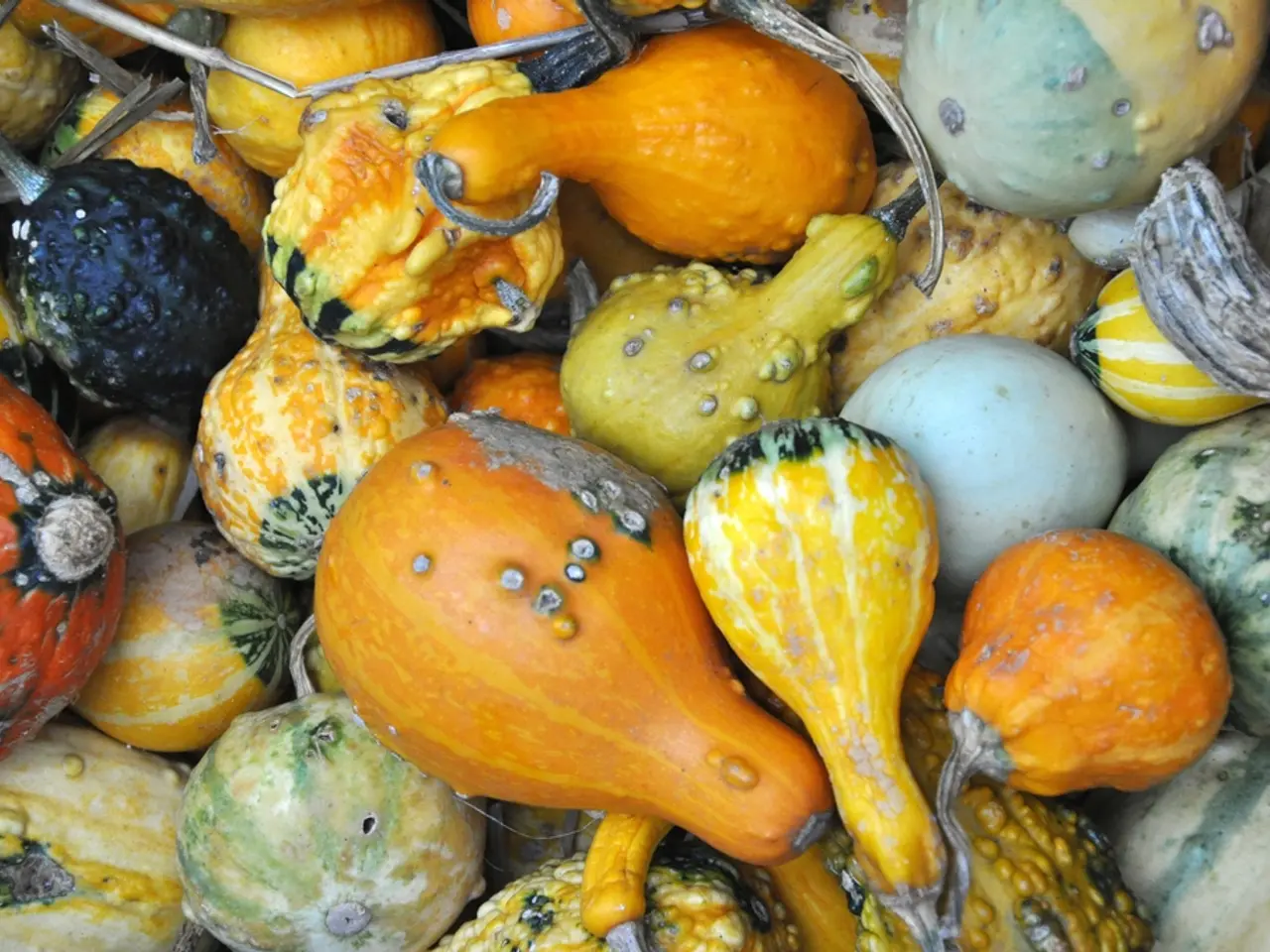Guide for Choosing Optimal Plants for Seed Harvesting
In the world of vegetable gardening, seed saving is an essential practice that allows gardeners to cultivate their own crops and preserve the unique traits of their plants. However, not all plants are suitable for seed saving, and it's crucial to select the best ones to ensure the seeds will grow into robust, productive plants.
The first step in choosing the best plants for seed saving is to focus on healthy, vigorous ones that exhibit desirable traits such as good flavor, productivity, and disease resistance. It's essential to save seeds only from the best plants and fruit, avoiding any diseased or weak specimens. The seeds you save will shape future crops.
When it comes to seed saving, self-pollinating plants are the easiest to manage. Tomatoes, peppers, beans, lettuce, peas, and broccoli are examples of self-pollinating plants that rarely cross-pollinate, preserving the traits of the parent plant. On the other hand, plants that cross-pollinate easily, such as cucumbers, melons, corn, pumpkins, gourds, and squash, require more careful management to prevent genetic mixing.
Another important factor to consider is the type of variety. Open-pollinated plants are the best choice for seed saving as seeds from F1 hybrids usually do not produce reliable offspring that resemble the parent plants.
To ensure the seeds are viable and strong, they must be fully mature on the plant before harvesting. This means allowing fruits or seed pods to stay on the plant past the edible stage, sometimes overripe or dry. For example, let tomatoes ripen fully on the vine, let beans and peas dry fully on the vine, allow cucumbers and squash to become overripe with hard skins, and let leafy greens like lettuce and arugula bolt and dry for seed.
Lastly, it's beneficial to save seeds from several plants and mix them together to average out characteristics. For instance, beetroot should be of an ideal size, neither too big nor too small, while celery varieties like Lathoms self-blanching should be suitably self-blanching, upright, and of good weight. Selected tomatoes should have good flavor, even shape, and perfect color, starting green, through orange to a deep red.
In summary, to choose the best plants for seed saving, select plants with the strongest health, vigor, and best traits for flavor and yield. Prefer self-pollinating or carefully managed varieties to maintain traits without unwanted cross-pollination. Use open-pollinated (non-hybrid) varieties for consistent seed-saving results. Allow seeds to mature fully on the plant before harvesting. By following these principles, you can ensure the seeds you save will grow into robust, productive plants that carry forward the best characteristics of your garden.
To successfully save seeds from your home-and-garden produce, prioritize healthy, vigorous plants that display desirable traits such as good flavor, productivity, and disease resistance, making sure to avoid any ill or weak specimens. self-pollinating plants, like tomatoes, peas, lettuce, and beans, are simpler to manage for seed saving since they seldom cross-pollinate, preserving the traits of the parent plant.
Open-pollinated varieties are ideal for seed saving as seeds from F1 hybrids usually do not produce dependable offspring that resemble the parent plants. To guarantee the seeds are viable and robust, they must be fully mature on the plant before harvesting, which means allowing fruits or seed pods to stay on the plant beyond the edible stage, sometimes even overripe or dry.




